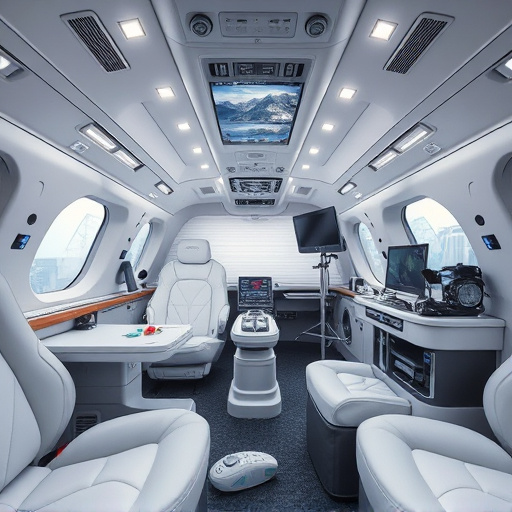In automotive tuning, both laboratory and real-world testing are vital for Cold Air Intake (CAI) performance evaluation. Labs offer controlled conditions to measure airflow, pressure, and temperature accurately, aiding in design refinement. Real-world tests simulate driving scenarios, considering road surface effects, providing holistic performance data. Combining these methodologies gives engineers a full understanding of CAI efficiency under diverse conditions, enabling them to optimize engine power, fuel efficiency, and reliability.
In the realm of automotive performance tuning, the debate between laboratory and real-world testing rages on. Laboratory testing offers a controlled environment, enabling precise measurements of various components, especially crucial for assessing the intricate workings of a cold air intake system. Conversely, real-world testing presents unique challenges, providing insights into the system’s behavior under diverse driving conditions. This article explores both methodologies, highlighting their advantages and limitations, to provide an accurate assessment for optimal cold air intake performance tuning.
- Laboratory Testing: Controlled Environment and Precision
- Real-World Testing: Challenges and Benefits for Cold Air Intake Performance
- Comparing Methodologies: Accurate Assessment for Optimal Performance Tuning
Laboratory Testing: Controlled Environment and Precision

In the realm of automotive performance tuning, laboratory testing stands as a cornerstone for understanding and optimising various components, especially when it comes to cold air intake (CAI) systems. This controlled environment offers unparalleled precision in evaluating CAI performance methodology. Scientists and engineers meticulously design tests within labs to simulate real-world driving conditions while eliminating external variables that could skew results. With state-of-the-art equipment, they measure airflow rates, pressure differentials, and temperature changes with exacting accuracy, providing data that directly correlates to engine performance gains.
The benefits of laboratory testing are multifold for CAI performance. It allows for repetitive tests under consistent conditions, ensuring reliable data collection. Moreover, labs can replicate specific scenarios, such as varying atmospheric pressures or temperatures, enabling engineers to analyse the CAI’s adaptability and efficiency across diverse environments. This level of control and precision is invaluable in fine-tuning the CAI’s design and parameters to maximise power output and fuel efficiency without compromising reliability.
Real-World Testing: Challenges and Benefits for Cold Air Intake Performance

Real-World Testing presents a unique set of challenges and benefits for evaluating cold air intake (CAI) performance, moving beyond controlled laboratory settings. Unlike lab tests that isolate components in a controlled environment, real-world testing simulates actual driving conditions, offering a more accurate representation of how CAIs perform under various scenarios. However, it faces hurdles like inconsistent environmental factors—temperature, humidity, and road conditions—which can influence results. Additionally, real-world data collection is often logistically complex, requiring extensive drives over diverse terrains to gather meaningful statistics.
Despite these challenges, real-world testing brings significant advantages. It allows for the assessment of CAI performance in everyday driving situations, including stop-and-go traffic and varying speeds. This approach also considers the impact of road surface conditions on intake efficiency, providing a holistic view of the CAI’s behavior over time. Moreover, it bridges the gap between lab results and real-world application, helping to identify potential issues or improvements that might not be apparent in controlled settings.
Comparing Methodologies: Accurate Assessment for Optimal Performance Tuning

When comparing laboratory and real-world testing for cold air intake performance, it’s crucial to understand that each offers unique advantages and insights. In a controlled laboratory environment, specific variables can be meticulously managed, allowing for precise measurement of cold air intake components’ individual performances. This method is invaluable for understanding theoretical limits and identifying potential bottlenecks in design. However, laboratory settings often oversimplify real-world conditions, potentially leading to discrepancies when applied to actual vehicles.
Real-world testing provides a more complex and dynamic setting, mimicking everyday driving scenarios with varying speeds, weather conditions, and other unpredictable factors. This approach offers a holistic view of the cold air intake system’s performance under authentic stresses. By combining data from both methodologies, engineers can achieve an accurate assessment, enabling them to fine-tune designs for optimal efficiency and reliability in various environments.
When it comes to assessing cold air intake (CAI) performance, both laboratory and real-world testing methodologies offer unique advantages. Laboratory testing provides a controlled environment, enabling precise measurement of airflow and power output. In contrast, real-world testing simulates actual driving conditions, revealing the true potential of a CAI system under diverse scenarios. By combining these approaches, developers can employ a comprehensive testing methodology to optimize CAI performance tuning, ensuring both accuracy and practicality.














